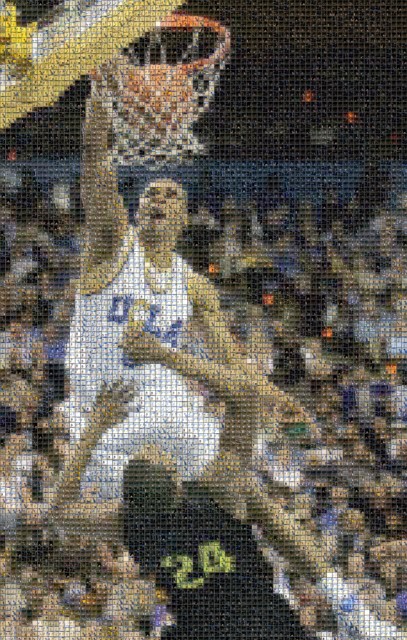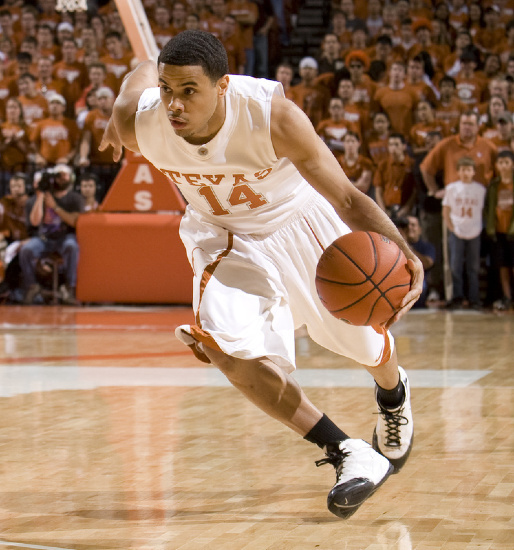Testing the Waters Rule to be Tested
Posted by rtmsf on October 28th, 2008This is verrrry interesting. The ACC, in all of its infinite basketball wisdom, is reportedly set to propose NCAA legislation that will allow players considering the NBA draft only ten days from the date of the NCAA Championship game to decide on whether they’re staying at Mother So Dear another year or leaving for the riches of the D-League Europe NBA. From the Raleigh News & Observer:
The ACC plans to propose NCAA legislation that would force men’s basketball underclassmen to decide whether they are in the NBA Draft within 10 days after the NCAA title game. ACC officials are considering submitting the proposal in time for an NCAA Board of Directors meeting on Thursday. If they wait, officials said Sunday, they will propose the idea next July. Under the proposal, “there would be no grace period — either you’re in or you’re out,” said Karl Hicks, the ACC’s associate commissioner for basketball operations. “We feel that’s what would work best for the student- athletes and that’s what would work best for the coaches.”

Best for the coaches, we see… yeah, this has the Roy and K’s dirty little hands all over it. Last year’s players had 21 days to decide to go pro, but another 49 days after that to withdraw if they liked. That gave them plenty of time – the ACC would say way too much time – to go through predraft workouts, talk to agents, GMs and other NBA people, and effectively gauge their overall draft stock before making a final decision. And letting a kid have time to get informed about the most important decision of his life is a bad thing? Here’s a shortened list of players who used the information they garnered to make a sound decision during last year’s ‘testing the waters’ period, all were considered marginal first-round (read: guaranteed contract) prospects.
- Ty Lawson, UNC
- Lee Cummard, BYU
- Wayne Ellington, UNC
- Lester Hudson, UT-Martin
- AJ Abrams, Texas
- Robert Dozier, Memphis
- Jeremy Pargo, Gonzaga
- Josh Akognon, Cal St. Fullerton
- Danny Green, UNC
- Robert Vaden, UAB
How different might their teams have looked if all of these players had kept their initial decision to leave school intact? On the final day of NBA training camp cuts, where would these players be now? Time is fleeting, but we suppose that everyone has forgotten how we got to the ‘test the waters’ rule in the first place. In the mid-90s, the NCAA decided that players should actually have a chance to, gasp!!!, learn about the draft process and their draft stock PRIOR to being locked into declaring (and henceforth throwing away their remaining college eligibility on mere whimsy). Imagine that – rather than hearing from their girlfriend’s second cousin about an ‘agent’ who thinks he has enough game for the L, Mr. Star Player was given a chance to actually make that determination himself. According to the RN&O article, this was taken into consideration:
Hicks said the ACC’s eight-member men’s basketball subcommittee, which included Florida State coach Leonard Hamilton and Virginia’s Dave Leitao, discussed whether the time period may be too short for players to make proper choices. However, he said, “there’s a sentiment that the longer the time goes on, the longer the lure of the NBA becomes more real in their mind, and they tend to make decisions based not on information that they’re necessarily getting from NBA teams or from coaches, but from other people. The notion is that if you do this and it does get passed, there could be some kids that make bad decisions, rushing into it. But there’s another thought that if that happens, after a year or two, then those that are coming after that would be all the wiser.”
Did Anyone Consult the Players on This?
Hogwash. Actually, Mr. Hicks, the exact opposite occurs. When a player feels rushed to make a decision, he is more likely to not gather all the appropriate information and listen to all the wrong people – i.e., the idiots and hangers-on closest to him with dollar signs in their eyes. Clemson’s KC Rivers, an actual PLAYER on an actual team with other players that this rule would impact, nails it:
Clemson senior K.C. Rivers, who briefly pondered submitting his name last April, said he disagreed with the legislation because he doesn’t think it will give players enough time to gather information from NBA teams and make an informed decision. “If this rule had been in effect [last spring] … I would probably have not been back at Clemson,” he said.
So congrats are in order for Roy, Coach K, and all the other ACC coaches who find it reprehensible for an athlete to have a proper amount of time to make an informed decision on his future (sidenote: 70 days may be too long, but 10 days is way too short). Perhaps the next time you make a life decision, you’ll appreciate having someone rushing you through the process as well. Oh, it hurts your recruiting? How so? Name one player who actually would have contributed to your program you were unable to recruit because of this rule – just one.

























































